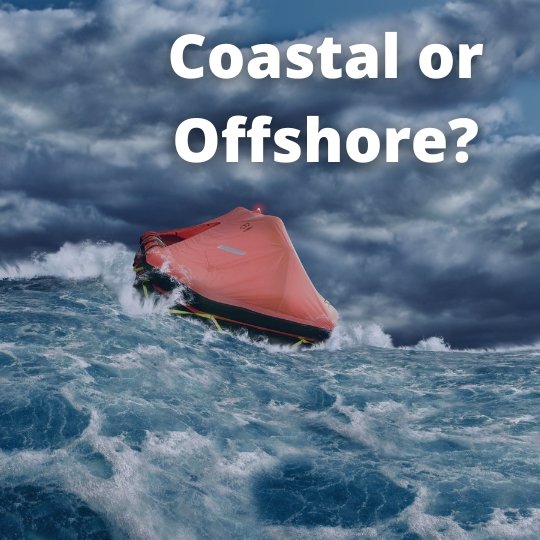Have you ever wondered what the difference is between coastal and offshore life rafts? In this article, we'll break down the key differences.
The primary differences between coastal and offshore life rafts are their freeboard (distance between the waterline and the top of tubes), floor insulation, the weight of materials, and included equipment & supplies.
Offshore Life Rafts
Offshore life rafts, such as the Viking RescYou™ (Ocean) Offshore Life Raft, are designed for use in rough, open ocean conditions and offer more features than coastal life rafts, but are typically more expensive. These rafts are equipped to protect and sustain occupants in harsh, stormy weather and colder water for over 24 hours.
Key features of an offshore life raft include:
- At least two separate flotation chambers (if one tube is punctured the raft will still remain floating with the weight of the full occupancy that it is graded for)
- Standard capacity can range from 4 to 8 people (some offshore life rafts, such as the Superior Wave Racer and Superior Wave Breaker, can accommodate up to 12 persons)
- Insulated floors (with two inflatable layers of insulating material)
- A fully inflatable canopy covering the entire raft
- Ballast bags to stabilize the raft in high winds or waves
- An inflatable boarding platform for easier entry into the raft
- A comprehensive survival kit, including food and water for more than 24 hours for the rated number of occupants
- Rain collector on canopy
- An automatically deployed drogue or sea anchor
Coastal Life Rafts
Coastal life rafts are designed for use in calm, near coastal waters and are intended to protect and sustain occupants for up to 24 hours.
Key features of a coastal life raft include:
- Two separate flotation chambers, typically smaller tubes than an offshore life raft (if one tube is punctured the raft will still remain floating with the weight of the full occupancy that it is graded for)
- Standard capacity is typically 4 to 6 person
- A single-layer, uninsulated floor
- A partially inflatable canopy covering the raft
- Ballast bags to stabilize the raft in rough sea conditions
- A boarding ladder made of webbing, canvas, or straps to assist with entry into the raft
- A standard survival kit containing minimal equipment and rations for approximately 24 hours for the rated number of occupants
- A manually deployed sea anchor
How to Choose: Offshore or Coastal Life Raft?
The choice between a coastal or offshore life raft will depend on your nautical lifestyle.
Are you a fisherman typically trolling the coastal reefs or are you offshore 70 miles chasing tuna? Do you sail the Florida coast or do you island-hop the Caribbean? Will you be sailing from your home port of Long Beach to the Channel Island National Park or Honolulu, HI? These are the type of questions you should be asking yourself as you plan to purchase a life raft.
This article provides an overview of the typical features offered by coastal and offshore life rafts, however, it's crucial to note that each raft has its own unique features and it's essential to conduct a thorough individual evaluation to ensure that it meets your specific requirements. You can see the specific features of each raft, and whats included, on the raft's product page. See our collection of coastal and offshore life rafts and decide which is best for you.
Still Not Sure?
Our team of survival at sea experts are here to assist you! Please send us an email or give us a call at 888-551-7238.

